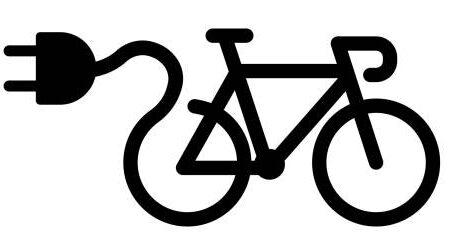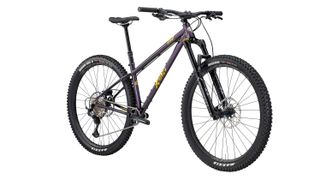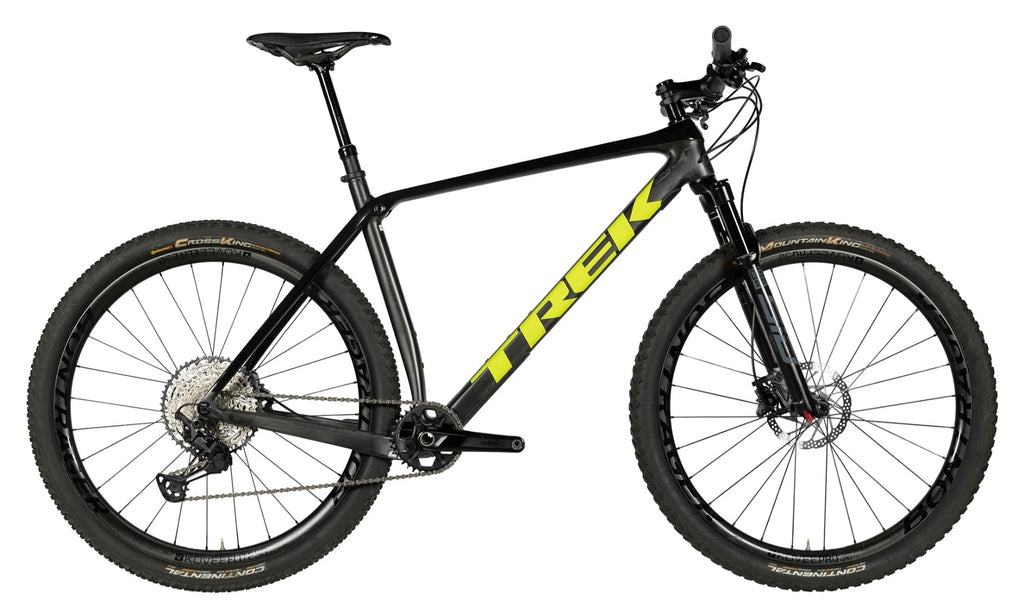Understanding Mountain Bike Suspension: Hardtail vs. Full Suspension
Mountain biking offers a thrilling experience, but choosing the right bike is crucial. A key decision involves suspension type: hardtail or full-suspension. The core difference lies in the presence or absence of rear suspension. A hardtail mountain bike features suspension only in the front fork, absorbing impacts from the front wheel. This design results in a simpler, lighter bike. In contrast, a full-suspension (often referred to as softtail) mountain bike boasts suspension in both the front and rear. This setup offers superior shock absorption, enhancing comfort and control, particularly on challenging terrains. Choosing between a hard tail vs soft tail mountain bike hinges on individual riding style and preferences. The decision impacts handling, performance, and overall riding experience. Consider the advantages and disadvantages of each type to make an informed choice. Visualizing the difference is easy. Imagine a bicycle; a hardtail has only the front fork with suspension, whereas a full-suspension bike has a shock absorber at both the front and rear. This fundamental distinction impacts the bike’s performance significantly, impacting ride quality and suitability for various terrains. The choice between a hard tail vs soft tail mountain bike is a critical step in finding the ideal ride.
Hardtail and full-suspension bikes cater to different riding styles and preferences. The hardtail mountain bike, a popular choice for cross-country riding and fitness enthusiasts, excels in efficiency on climbs due to its lighter weight and simpler design. This translates into less energy expenditure on uphill sections. However, this efficiency comes at the cost of a potentially harsher ride on rough and uneven trails. The lack of rear suspension means more impacts are transferred directly to the rider. This can cause fatigue and discomfort during extended rides or on bumpy terrain. Full-suspension models, while heavier and more complex, offer a significant upgrade in ride quality. The added rear suspension absorbs more bumps, resulting in a smoother, more controlled ride, even at higher speeds or on very technical trails. This makes them ideal for aggressive trail riding, enduro, or downhill mountain biking where comfort and control are paramount. However, the increased weight and complexity lead to higher costs and more demanding maintenance requirements. The choice of hard tail vs soft tail mountain bike depends heavily on individual needs and priorities.
The hard tail vs soft tail mountain bike debate often centers on terrain suitability. Hardtails shine on smoother trails and climbs where their lighter weight and efficiency are advantageous. Their simplicity also makes them less expensive and easier to maintain. On the other hand, full-suspension bikes reign supreme on rougher terrains, rocky trails, and steep descents. The superior shock absorption enhances control and rider comfort. Therefore, an experienced trail rider tackling challenging descents would likely prefer a full-suspension bike for better traction and stability. Conversely, a beginner focusing on fitness and smoother trails might find a hardtail perfectly adequate and more budget-friendly. Ultimately, the best choice depends on your riding style, frequency, and the typical terrain you’ll encounter. The hard tail vs soft tail mountain bike discussion highlights the importance of understanding your riding needs before committing to a purchase.
Hardtail Mountain Bikes: Advantages and Disadvantages
Hardtail mountain bikes are a popular choice for riders seeking a balance of performance and affordability. A key advantage is their lighter weight, making them more efficient on climbs. Simpler maintenance contributes to lower long-term costs. These bikes are generally better suited for efficient climbing. Models like the Trek X-Caliber and Giant Talon exemplify this class of bikes, frequently chosen for their responsive handling and climbing prowess.
However, hardtail mountain bikes often provide a harsher ride on rough terrain compared to full-suspension models. This can result in discomfort during extended rides over bumpy trails. Reduced traction on technical descents is another potential drawback. The lack of rear suspension can make navigating technical features more challenging for experienced riders. When encountering rocky descents, a hard tail vs soft tail mountain bike might struggle to maintain control.
Despite these drawbacks, hardtail mountain bikes remain a valuable option for riders prioritizing affordability, maneuverability, and efficiency. Their lightweight nature and simplicity make them ideal for various riding styles, particularly cross-country and introductory trail riding. The choice between a hardtail and a full-suspension mountain bike is a crucial decision, dependent on many factors. Riders new to mountain biking might find the initial investment of a hardtail appealing.
Full-Suspension Mountain Bikes: Advantages and Disadvantages
Full-suspension mountain bikes, often called softtail mountain bikes, offer a smoother ride compared to hardtail bikes. These bikes have suspension in both the front and rear. This feature significantly improves rider comfort and control on rough terrain. The added suspension in the rear provides additional traction and support when navigating technical descents and uneven surfaces. This translates to an enhanced overall riding experience, making it a popular choice for experienced riders and those tackling more challenging trails. The smooth ride also reduces the physical strain on the rider during extended rides.
However, full-suspension mountain bikes do come with some drawbacks. They are generally heavier than their hardtail counterparts, potentially impacting climbing efficiency. The additional components and suspension mechanisms increase the complexity of maintenance. This necessitates more frequent checks and potentially more extensive repairs. Consequently, the overall cost for a full-suspension bike is typically higher compared to a hardtail bike. This can affect the budget for some riders. While the enhanced comfort and control are significant benefits, understanding these trade-offs between hard tail vs soft tail mountain bike is essential for making an informed decision.
Full-suspension models often come with advanced features like progressive suspension designs and different shock settings. This adds to the overall price. Specific examples include the Specialized Stumpjumper and the Trek Remedy. These models are often sought after by those who prioritize a comfortable and controlled ride over all else. This type of investment can be ideal for more advanced riders and those undertaking lengthy, challenging adventures. Evaluating hard tail vs soft tail mountain bike is crucial to selecting the ideal fit.
How to Choose Between a Hardtail and a Full-Suspension Mountain Bike
Selecting the ideal mountain bike, whether hardtail or full suspension, depends on individual riding style, budget, terrain preferences, and personal needs. Consider the type of riding you’ll mostly do, as this significantly influences the optimal choice. Beginners and those on a budget often find hardtail bikes a suitable starting point.
Start by considering your riding style. Cross-country (XC) riders often prioritize lightweight bikes for efficiency on climbs. A hardtail mountain bike might be the better choice for these riders. Experienced trail riders, on the other hand, frequently need a more comfortable ride and enhanced traction on varied terrain. Full suspension mountain bikes offer superior comfort and control on technical descents. Enduro and downhill riders almost always opt for full suspension, due to its superior control and shock absorption capabilities in high-impact terrain.
Budget is another crucial factor. Hardtail mountain bikes typically have a lower price point compared to full suspension models. The cost of full-suspension bikes reflects the added complexity of components and materials used for superior performance. Terrain is a crucial consideration. For smooth, well-maintained trails, the simplicity and efficiency of a hardtail bike often outweigh the added cost and complexity of a full-suspension model. On rough, technical terrains, full suspension bikes offer significant advantages, providing superior shock absorption and traction. The needs of a beginner XC rider differ substantially from those of an experienced trail rider. Factors such as rider skill, terrain complexity, and desired comfort level should be considered when choosing between a hardtail and soft-tail mountain bike. Carefully consider personal preferences; choosing the right hard tail vs soft tail mountain bike involves aligning the bike with your individual riding style and experience level for an enjoyable and rewarding experience.
Hardtail vs. Full Suspension: Terrain Considerations
Choosing between a hardtail and a full-suspension mountain bike hinges significantly on the terrain you frequently ride. Smooth trails often favor a hardtail due to its lighter weight and more efficient climbing capabilities. The lack of rear suspension means less energy is lost to suspension movement, making for a more efficient ride uphill.
Rocky trails and technical descents, however, present a different story. A hardtail vs soft tail mountain bike’s limited suspension can prove inadequate on rough, uneven terrain. The impact of bumps and rocks translates directly to the rider, potentially leading to discomfort and fatigue. A full-suspension mountain bike, on the other hand, absorbs these impacts and offers a more controlled and comfortable ride. This superior shock absorption enhances traction, control, and confidence, especially on demanding descents.
Steep climbs, while potentially more manageable for a hardtail due to its agility, can become more demanding when the path becomes extremely rocky or has obstacles. The lack of rear suspension can result in a harsher experience, especially when compared to a full suspension hard tail or soft tail bike. For technical descents, a full-suspension bike’s superior traction and control are invaluable. The added suspension significantly aids in maintaining a secure and stable position, promoting confidence and maneuverability, essential for navigating challenging trails. The rider’s experience and riding style are crucial factors in choosing the best hardtail vs soft tail mountain bike. Different terrain often dictates the need for one type over the other.
Budget Considerations for Hardtail vs. Full Suspension Mountain Bikes
Choosing between a hardtail and full-suspension mountain bike often involves a significant financial difference. Full-suspension bikes typically command a higher price tag compared to hardtails. This difference stems from several factors affecting the overall cost. Sophisticated suspension systems, featuring advanced components and technologies, contribute to the elevated price of full-suspension models. The materials employed, such as carbon fiber or high-strength alloys, play a role. These premium materials enhance the bike’s performance but also increase production costs. Furthermore, the added complexity of a full-suspension design often involves intricate linkages, shock absorbers, and other components, each adding to the final price.
The cost of a hardtail vs soft tail mountain bike varies depending on the specific model and brand. Budget-friendly hardtails often start around $500 to $1,000. However, high-end hardtail models can reach prices exceeding $2,000. Conversely, entry-level full-suspension bikes may range from $1,000 to $1,500, while top-tier full-suspension models frequently exceed $3,000 and can go into the thousands. Ultimately, the price range reflects the quality of components, features, and intended use. Understanding these price differences aids in choosing a bike that aligns with your budget and desired level of performance.
Consider the value proposition each type of hard tail vs soft tail mountain bike offers. A hardtail offers a good balance of performance and affordability. A full-suspension bike delivers a superior ride experience on challenging terrains. By weighing the pros and cons of each option and carefully assessing one’s budget, riders can make an informed decision that aligns with their needs and financial resources.
Maintenance and Repair: Hardtail vs. Full Suspension
Choosing between a hardtail and a full-suspension mountain bike involves considering long-term maintenance. Hardtail bikes, simpler in design, require less frequent maintenance. Routine tasks like cleaning, lubricating the chain, and checking brake pads are similar to full-suspension bikes. However, hardtails lack the complex rear suspension system, eliminating the need for shock servicing, linkage maintenance, and pivot bearing checks. This translates to lower maintenance costs and simpler repairs for the average rider. The absence of a rear shock significantly reduces the potential for costly repairs, making hardtails a more budget-friendly option over the lifespan of the bike. For a hard tail vs soft tail mountain bike comparison, this is a key factor to consider.
Full-suspension bikes, on the other hand, demand more attention. Regular servicing of the rear shock is crucial, often requiring specialized tools and knowledge. Linkage components and pivot bearings require periodic cleaning and lubrication to prevent wear and tear. These components are prone to more wear and tear than a hardtail’s simple frame. The increased complexity also means that repairs can be more time-consuming and expensive, requiring specialized tools and potentially professional assistance. Therefore, the overall cost of ownership for a full-suspension bike significantly exceeds that of a hardtail, especially over several years. When comparing a hard tail vs soft tail mountain bike in terms of maintenance, the difference is substantial.
The frequency of maintenance also differs significantly. Hardtails might require a thorough service every six months to a year, depending on riding conditions. Full-suspension bikes, however, often necessitate more frequent servicing—potentially every three to four months, or even more often for aggressive riders and challenging terrain. This increased frequency directly translates into higher recurring costs. Therefore, a careful assessment of maintenance needs is vital when choosing between a hard tail vs soft tail mountain bike, especially considering the budget and mechanical aptitude of the rider. The long-term cost of ownership is a crucial aspect when weighing the pros and cons of each bike type. Regular maintenance, regardless of bike type, is essential for safety and optimal performance.
Real-World Examples and Case Studies
Choosing between a hardtail and a full-suspension mountain bike often comes down to individual needs and riding style. Consider the experienced trail rider who tackles rugged terrain regularly. A full-suspension bike offers superior comfort, control, and traction on demanding descents and rocky sections, making it the ideal choice. This contrasts sharply with a beginner cross-country rider who prioritizes efficiency and lightweight performance. A hardtail bike perfectly suits their needs, providing a simpler, more affordable option for smooth trails and gentle climbs. The hard tail vs soft tail mountain bike debate is ultimately resolved by considering the rider’s skill level and intended use.
Professional mountain bike races frequently showcase the strengths of both bike types. In cross-country racing, where speed and efficiency are paramount, hardtail bikes dominate. Their lighter weight provides a significant advantage on long, uphill climbs. In contrast, downhill races, characterized by extreme terrain and high speeds, favor full-suspension bikes. Their superior shock absorption and control allow riders to maintain speed and stability on incredibly challenging courses. The choice between a hardtail and a full-suspension bike is clearly demonstrated in these contrasting race disciplines. Reviews consistently highlight the strengths and weaknesses of each type. For example, reviews of the Trek X-Caliber (hardtail) often emphasize its lightweight design and affordability, while reviews of the Specialized Stumpjumper (full-suspension) emphasize its smooth ride and exceptional handling on rough trails. This reflects the broader market trend – hardtails are popular for entry-level riders and cross-country enthusiasts, whereas full-suspension bikes appeal to more experienced riders seeking performance and comfort on challenging terrain. The hard tail vs soft tail mountain bike decision depends entirely on the specific requirements of the rider.
Analyzing rider testimonials further solidifies the importance of matching the bike type to the rider’s skill and terrain preferences. Many testimonials highlight the ease of maintenance and affordability of hardtail bikes, making them a popular choice for beginners. However, riders progressing to more technical trails often find the added comfort and control of full-suspension bikes crucial. The transition to a full-suspension bike often marks a significant upgrade in riding experience. Ultimately, the decision between a hardtail and a full-suspension mountain bike hinges on a careful consideration of individual riding style, terrain, budget, and skill level. This decision process, though, is made easier with the knowledge gleaned from real-world examples and case studies of various riders and bike models across numerous terrains. A thorough understanding of the hard tail vs soft tail mountain bike capabilities will empower prospective buyers to make informed decisions.




